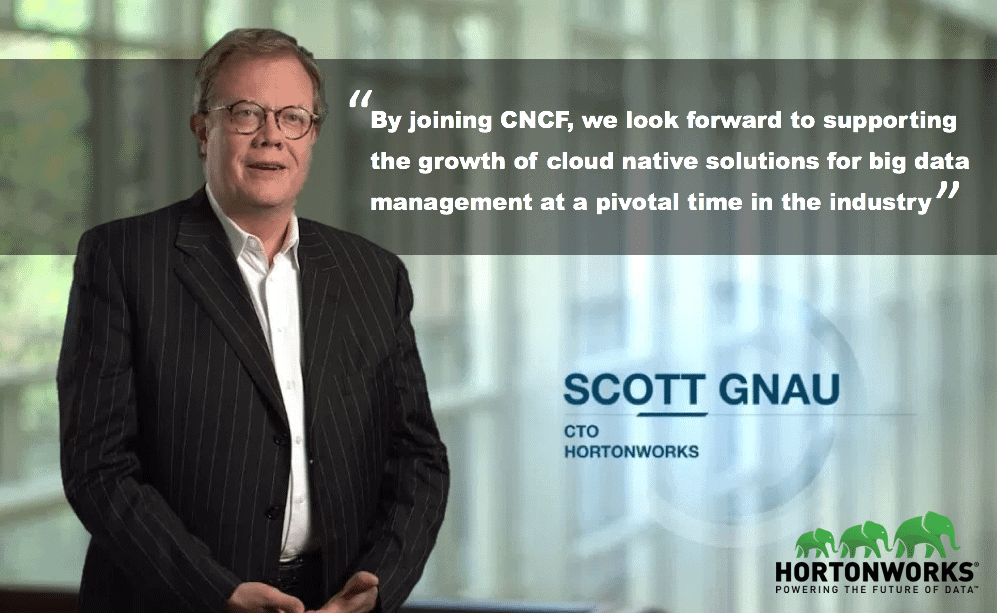This blog post was published on Hortonworks.com before the merger with Cloudera. Some links, resources, or references may no longer be accurate.

According to a recent IDC survey, organizations are migrating 50% of their public cloud applications and data to either on-premises or private cloud environments in the next 2 years due to security concerns. However, some say the move to the cloud is inevitable: LogicMonitor indicates that 83% of enterprise workloads will be in the cloud by 2020, and Ovum predicts that 50% of new big data workloads will be deployed in the cloud. These incompatible viewpoints boil down to a “he said, she said” take on what the future may hold, and frankly, nobody has the final answer until the day arrives.
The Myth, The Reality, The Answer
However, I wonder, will there ever be a black-and-white verdict to resolve this debate of on-prem vs cloud? Furthermore, is it really worthwhile to find out? Because data is EVERYWHERE across the edge, on-prem and in the cloud; it is today and will be in the future.
The real question to ask is what do we do in this reality? Is there a fail-safe data architecture for modern enterprises, regardless of market trends? How do we prevent a restructuring of talent every time a new IT leadership comes in and decides to steer the direction in a different way, whether it’s on-prem-we-stay or off-the-cloud-we-go? How do we simplify the complexity and conserve the manpower of managing distinct data environments?
Look no further, Hortonworks has already provided you the answer with a hybrid architecture vision that enables consistent user experience and unified data security and governance in our Open Hybrid Architecture initiative.
Further the Value of Open Source
To bring the cloud architecture on-premises and make Apache Hadoop cloud native, it is a transformation that requires tremendous dedication and commitment from the open source ecosystem. To drive this effort, Hortonworks has been investing in the following three aspects to materialize the open source hybrid architecture vision:
Open Innovation – Hortonworks is building on the core belief in 100% open source to help our customers remove vendor lock-in, spur faster enhancements, and provide the optimal cost-efficiency for workloads and applications. Our core team will continue to advance the open source products to make them containerization-friendly. Using DataPlane as a control and orchestration layer, containerization of big data workloads facilitates an interaction model that enables programmatic spin-up and down of workload-specific clusters (different versions of Apache Hive, Apache Spark, Apache NiFi, etc.) for users and workflows.
Open Collaboration – The fundamental value in open collaboration is that anyone in the open can leverage the public source code repositories and build binaries themselves. We will continue to leverage and collaborate with the committers in the Apache community to drive faster innovations. Because a pivotal piece in this initiative is the separation of storage and compute, we will accomplish that by adopting a scalable file-system and object-store interfaces via the Apache Hadoop HDFS Ozone project. Similar to the partnerships we have in place with AWS and Azure, our expanded collaboration with Google Cloud accelerates big data analytics in the cloud, and completes a short-term milestone that our open source big data technology is available on all top 3 cloud provider platforms in the market.
Open Community – We continue to have the whole open source community to stand behind us, even more so with the recent partnership with IBM and Red Hat to advance containerized big data workloads for hybrid architectures. Hortonworks will certify our big data applications as Red Hat certified containers on Red Hat OpenShift, an industry-leading cloud-native enterprise container and Kubernetes application platform for hybrid settings. This allows customers to more easily adopt a hybrid architecture for big data applications and analytics, all with the common and trusted security, data governance and operations that enterprises require. Furthermore, with the recent induction into the Cloud Native Computing Foundation (CNCF) as a Gold Member, Hortonworks collaborates with the community on current and future cloud native technologies that will help drive the open source big data industry forward.

Closing Remarks
To learn more about the Open Hybrid Architecture Initiative, please visit the following resources:
- Blog from Arun Murthy, CPO, Hortonworks: Introducing the Open Hybrid Architecture Initiative
- More about Apache Hadoop Ozone: Introducing Apache Hadoop Ozone: An Object Store for Apache Hadoop
- Watch webinar: Cloud Computing — an Extension of your Data Strategy
- Analyst article: Hortonworks unveils roadmap to make Hadoop cloud-native



